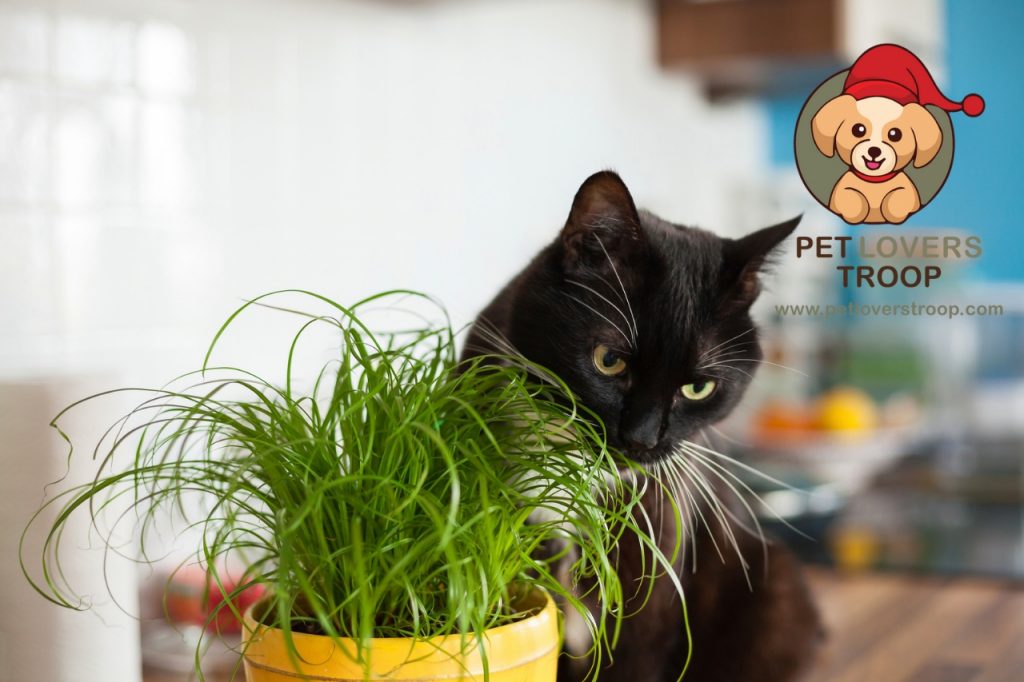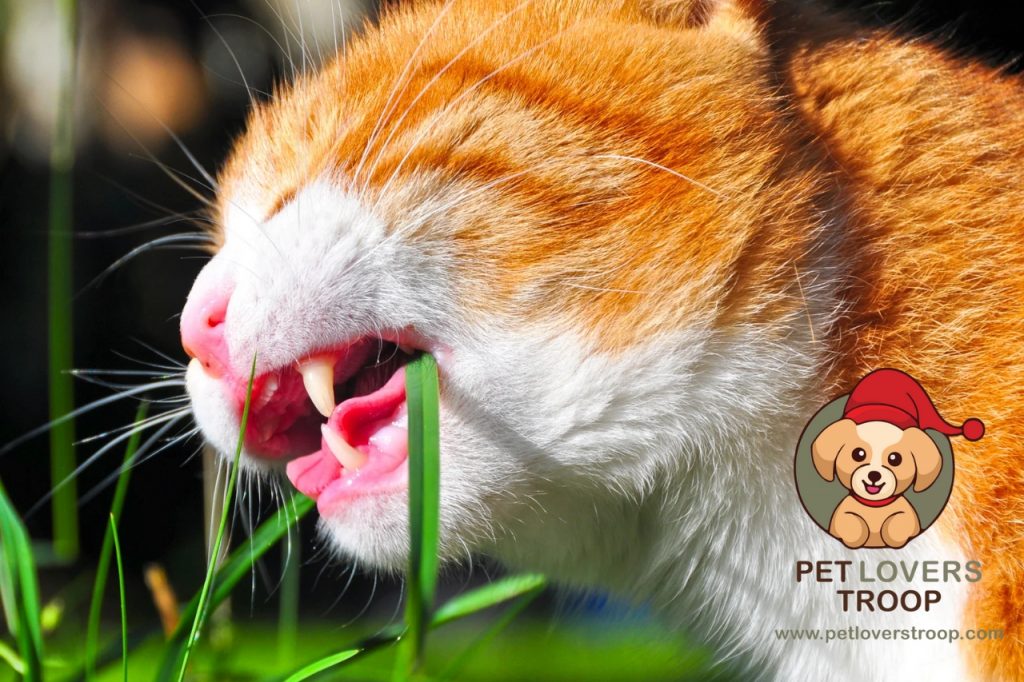When it comes to pampering our feline companions, the list is endless: cozy beds, stimulating toys, premium food, and even the occasional treat.
But there’s one addition that’s often overlooked and yet incredibly beneficial for your cat’s health and happiness: cat grass. If you’ve ever seen your cat nibble on plants or grass, you might have wondered why. Could it be mere curiosity, or does it fulfill a deeper need?
In this article, we’ll uncover the secret benefits of cat grass, explore why your cat craves it, and share tips on introducing this green delight into your home. Let’s dive in and discover why this simple plant is a must-have for your feline friend.

What Is Cat Grass?
Cat grass refers to specific types of grasses that are safe and beneficial for cats to eat. Common varieties include wheatgrass, oat grass, rye, and barley. These grasses are easy to grow indoors and provide a safe, chemical-free alternative to outdoor plants that may be harmful to your pet.
Check out: Why Does My Cat Knead? Understanding This Behavior – February 2025
Unlike houseplants, which can sometimes be toxic, cat grass is grown specifically for your feline’s enjoyment and well-being. It’s important to note that cat grass is different from catnip; while catnip triggers playful or euphoric behavior due to its active compound nepetalactone, cat grass serves a more nutritional and digestive purpose.
Why Do Cats Eat Grass?
The sight of a cat eating grass might seem odd at first. After all, cats are obligate carnivores, meaning their primary diet consists of meat. However, there are several reasons why your feline friend might be drawn to nibbling on greens:
Digestive Aid: Cat grass can help with digestion by inducing vomiting to expel hairballs or other indigestible materials. This natural behavior helps prevent blockages in the digestive tract.
Nutritional Boost: Grasses for cats are rich in essential nutrients like fiber, folic acid, and vitamins. These nutrients can support overall health, including better digestion and oxygen transportation in the blood.
Instinctual Behavior: Cats in the wild often eat grass as part of their natural instincts. It’s believed that this behavior helps cleanse their system or make up for missing elements in their diet.
Curiosity and Enjoyment: Some cats simply enjoy the texture and taste of grass. The act of chewing can also be mentally stimulating and provide a fun activity for your indoor cat.
Learn more here: The Scoop on Cats and Grass: Is it safe? Is it healthy?
The Secret Benefits of Cat Grass
1. Improved Digestion
One of the primary benefits of cat grass is its role in aiding digestion. The high fiber content helps regulate your cat’s digestive system, preventing issues like constipation. Additionally, if your cat ingests something it shouldn’t have, such as a piece of string or plastic, the grass can help it pass through their system more easily.
2. Natural Hairball Remedy
Indoor cats often groom themselves excessively, leading to the accumulation of hair in their stomach. Cat grass acts as a natural hairball remedy by either helping cats vomit the hairballs or enabling them to pass through the digestive tract. This can reduce the frequency of hairballs and make your cat more comfortable.
Learn more about: The Many Wholesome Benefits of Cat Grass
3. Boosts Immunity
Grasses for cats, such as wheatgrass, are loaded with vitamins A, C, and E. These antioxidants support a strong immune system, keeping your cat healthier and more resistant to illnesses. The chlorophyll found in cat grass also has detoxifying properties, which can help cleanse your cat’s system of toxins.
4. Stress Relief and Enrichment
Providing cat grass indoors can offer mental stimulation and stress relief for your feline friend. Chewing on grass gives indoor cats an opportunity to engage in a natural behavior, which can reduce anxiety and boredom. This is particularly beneficial for cats with limited outdoor access.
Read more here: How to Keep Your Cat Entertained: Fun Cat DIY Toys and Games
5. Dental Health
Chewing on cat grass can promote better dental hygiene by naturally cleaning your cat’s teeth and gums. While it’s no replacement for regular dental check-ups, it’s a simple way to support oral health.
6. Hydration Support
Cat grass contains a significant amount of water, which can help keep your cat hydrated. This is especially useful for cats who don’t drink enough water on their own.

How to Grow Cat Grass Indoors
Growing a cat grass plant is surprisingly easy and doesn’t require a green thumb. Here’s how you can do it:
Learn more about: Decoding Cat Tail Signs: What Your Feline Friend’s Tail Is Telling You
What You’ll Need:
- Cat grass seeds (available at pet stores or online)
- A shallow pot or container with drainage holes
- Potting soil or seed-starting mix
Steps:
- Prepare the Pot: Fill the container with soil, leaving about an inch of space at the top.
- Plant the Seeds: Sprinkle the seeds evenly over the soil and cover them lightly with a thin layer of soil.
- Water: Mist the soil with water to keep it moist but not soggy.
- Provide Sunlight: Place the pot in a sunny spot, such as a windowsill. Cat grass typically grows best with moderate sunlight.
- Wait and Harvest: Within 7-10 days, you’ll have lush cat grass ready for your feline friend to enjoy. Trim it down as needed to keep it fresh and prevent overgrowth.
What Grasses Can Cats Eat?
Not all grasses are safe for cats. When choosing grass for cats, stick to these cat-friendly options:
Wheatgrass: A popular choice, rich in chlorophyll and antioxidants.
Oat Grass: High in fiber and beneficial for digestion.
Rye Grass: Safe and easy to grow indoors.
Barley Grass: Packed with nutrients and easy to digest.
Avoid grasses treated with pesticides or fertilizers, as these can be harmful to your cat.
Educate yourself more: 5 Types of Cat Grass You Can Grow
Common Concerns About Cat Grass
1. Will My Cat Overeat It?
Cats usually self-regulate their intake of grass. However, if your cat eats too much at once, it may vomit. To prevent this, offer small amounts initially and observe your cat’s behavior.
2. Can Outdoor Grass Be Used?
While outdoor grass might seem like a convenient option, it’s often exposed to harmful chemicals or pollutants. Growing cat grass indoors ensures it’s safe and uncontaminated.
Know more about: Cat Crazy Moments: Unraveling the Mystery of Your Feline’s Wild Antics
3. Is Cat Grass Suitable for All Cats?
Yes, most cats can enjoy the benefits of cat grass. However, if your cat has any specific health concerns, consult your veterinarian before introducing it.
4. How Do I Prevent Mold in the Soil?
To prevent mold, ensure the container has proper drainage, avoid overwatering, and provide adequate ventilation. If mold appears, replace the soil and seeds and start fresh.
Tips for Introducing Cat Grass to Your Home
- Start Small: Place the cat grass plant in an accessible area and let your cat explore it at its own pace.
- Monitor Behavior: Observe how your cat reacts to the grass. Some cats might dive right in, while others may take time to develop an interest.
- Keep It Fresh: Replace the plant every 2-3 weeks to ensure it remains fresh and nutritious.
- Combine with Enrichment: Use the grass alongside other activities, like puzzle feeders or interactive toys, to create a stimulating environment.
- Place Strategically: If you have other houseplants, place the cat grass in a designated area to prevent your cat from nibbling on toxic plants.

Final Thoughts: Why Every Cat Needs Cat Grass
Cat grass might seem like a small addition to your home, but it’s a game-changer for your cat’s health and happiness. From aiding digestion to reducing stress, this simple plant offers a host of benefits that enhance your feline’s well-being. Plus, growing cat grass indoors is an easy, affordable way to show your furry friend some extra love.
Know more about: A Guide on Cat Language and Signals – January 2025
By understanding the many benefits and addressing common concerns, you can make an informed decision about adding cat grass to your cat’s environment. So, why not give it a try? With just a bit of effort, you can create a greener, happier space for your cat to thrive.
After all, a healthy cat is a happy cat!
